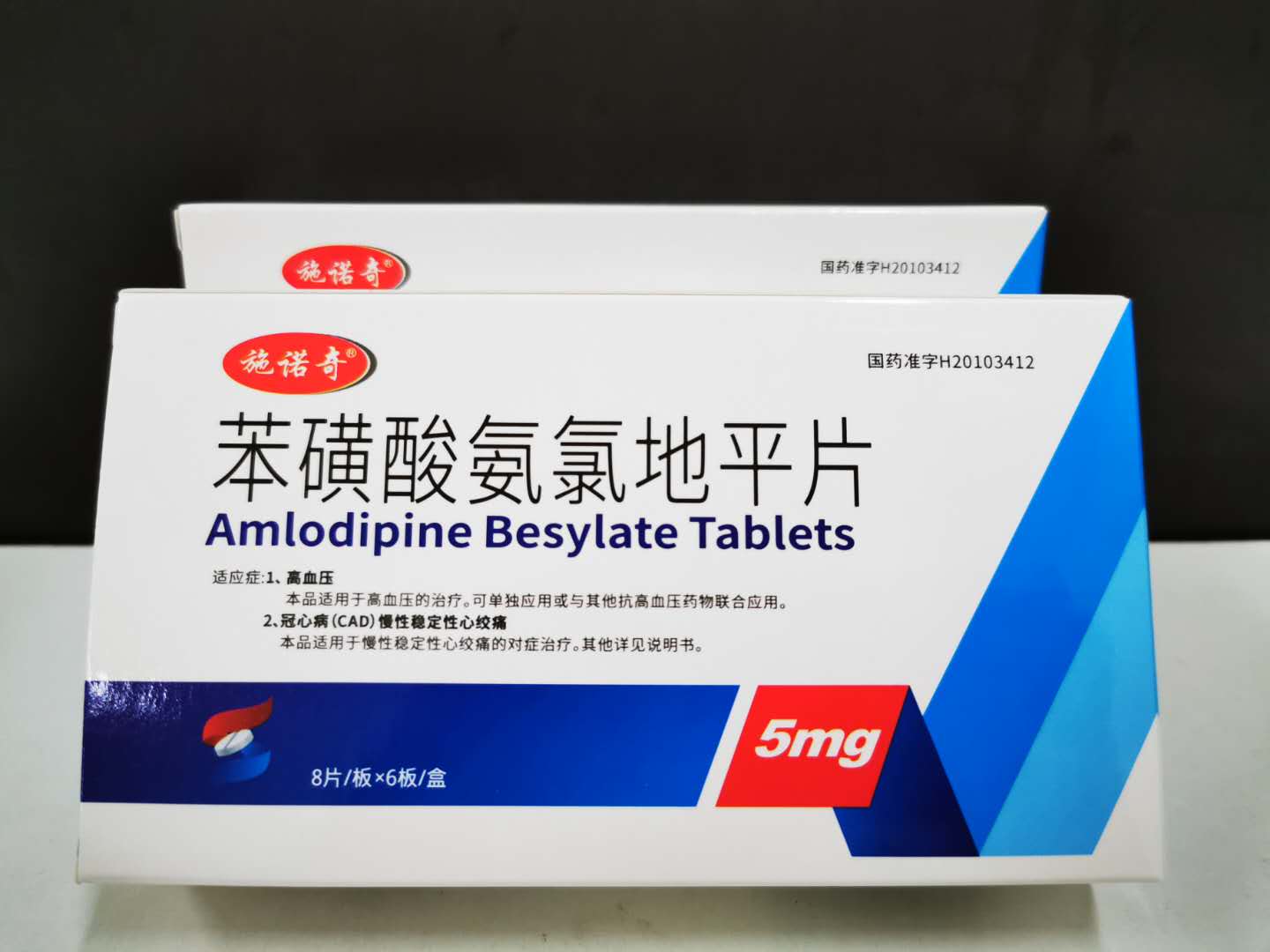Amlodipine Besylate Tablets
Drug Name: | Amlodipine besylate tablets | |||||||||||||||||||||||||||||||||||||||||||||||||||||||||||||||
Product Category: | tablet | |||||||||||||||||||||||||||||||||||||||||||||||||||||||||||||||
common name: | Amlodipine besylate tablets | |||||||||||||||||||||||||||||||||||||||||||||||||||||||||||||||
English name: | Amlodipine Besylate Tablets | |||||||||||||||||||||||||||||||||||||||||||||||||||||||||||||||
Chinese Pinyin: | Benhuangsuan Anlüdiping Pian | |||||||||||||||||||||||||||||||||||||||||||||||||||||||||||||||
Ingredients: | The main ingredient of this product is amlodipine besylate, its chemical name is: 3-ethyl-5-methyl-2-(2-aminoethoxymethyl)-4-(2-chlorophenyl)-1 , 4-Dihydro-6-methyl-3, 5-pyridinedicarboxylate benzenesulfonate. | |||||||||||||||||||||||||||||||||||||||||||||||||||||||||||||||
Structural formula: |  | |||||||||||||||||||||||||||||||||||||||||||||||||||||||||||||||
Molecular formula: | C 20 H 25 N 2 O 5 Cl, C 6 H 6 O 3 S | |||||||||||||||||||||||||||||||||||||||||||||||||||||||||||||||
Molecular weight: | 567.1 | |||||||||||||||||||||||||||||||||||||||||||||||||||||||||||||||
Traits: | This product is white or almost white film. | |||||||||||||||||||||||||||||||||||||||||||||||||||||||||||||||
Indications: | 1. Hypertension This product is suitable for the treatment of hypertension. It can be used alone or in combination with other antihypertensive drugs. 2. Coronary heart disease (CAD) and chronic stable angina pectoris This product is suitable for the symptomatic treatment of chronic stable angina pectoris. It can be used alone or in combination with other anti-angina drugs. Vasospasm angina (Prinzmetal's or variant angina) This product is suitable for the treatment of confirmed or suspected vasospasm angina. It can be used alone or in combination with other anti-angina drugs. Coronary heart disease confirmed by angiography is confirmed to be coronary heart disease by angiography, but for patients with ejection fraction ≥40% and no heart failure, this product can reduce the risk of hospitalization for angina pectoris and the risk of coronary artery reconstruction. | |||||||||||||||||||||||||||||||||||||||||||||||||||||||||||||||
specification: | 5mg | |||||||||||||||||||||||||||||||||||||||||||||||||||||||||||||||
Dosage: | Adults: Usually, the initial dose of this product for the treatment of hypertension is 5 mg once a day, and the maximum dose is 10 mg once a day. For patients who are small, weak, elderly, or with liver insufficiency, the starting dose is 2.5 mg once a day; this dose can also be used in combination with other antihypertensive drugs. | |||||||||||||||||||||||||||||||||||||||||||||||||||||||||||||||
Adverse reactions: | The safety of this product has been confirmed in clinical studies in the United States and other foreign countries, involving more than 11,000 patients. In general, patients have a good tolerance for the daily dose of this product up to 10mg. The adverse reactions reported during the treatment of this product were mostly mild to moderate. In a clinical study of 10 mg of this product (N=1730) directly compared with placebo (N=1250), only 1.5% of the amlodipine group discontinued due to adverse reactions, which was not significant compared to the placebo group (about 1%) The difference in sex. The most common side effects are headache and edema. The incidence of dose-related side effects (%) is as follows:
The correlation between other adverse reactions and dose is uncertain, but the incidence of more than 1% in
Some adverse reactions that have been shown to be related to drugs and doses and occur more frequently in women than men are shown below:
|



